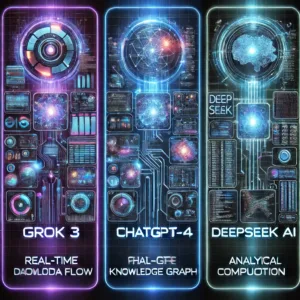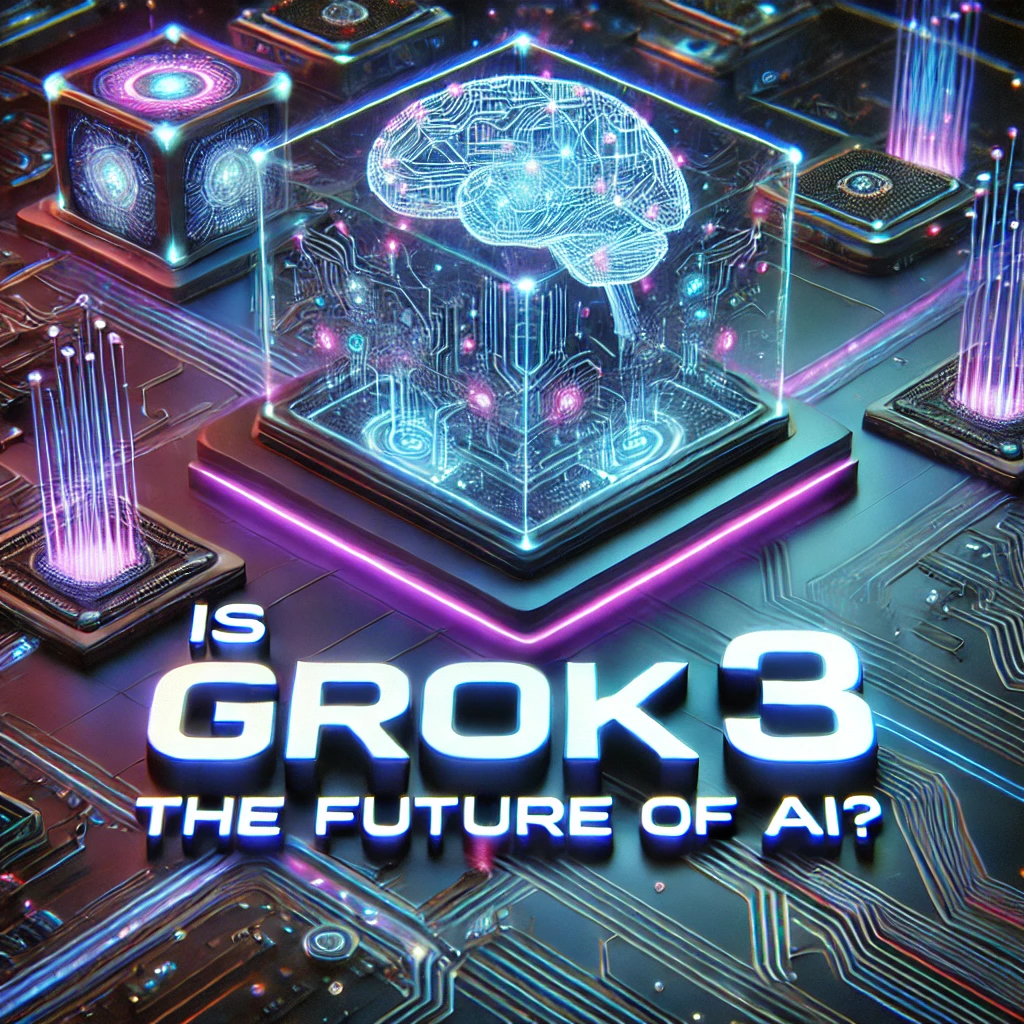Artificial intelligence is evolving at an unprecedented pace, and with each new iteration, we move closer to more powerful and capable models. One of the latest contenders making waves in the AI landscape is Grok 3. Developed by xAI, the company founded by Elon Musk, Grok 3 aims to challenge the status quo in AI-driven interactions, competing directly with models like OpenAI’s GPT-4 and DeepSeek AI.
But does Grok 3 truly represent the future of AI? Let’s break down what it offers, how it compares to existing models, and what its future implications might be.
What is Grok 3?
Grok 3 is the latest version of the Grok AI series, designed to provide insightful, witty, and sometimes edgy responses. Unlike traditional chatbots that focus solely on factual accuracy, Grok 3 emphasizes a more conversational and engaging approach, making AI interactions feel more natural and human-like.
The model is deeply integrated with X (formerly Twitter), allowing it to access real-time data and keep up with trending topics. This dynamic nature gives it an edge over other AI models that primarily rely on pre-existing training data.
Key Features of Grok 3
- Real-Time Knowledge Access – Unlike many AI models limited to historical data, Grok 3 can pull live information from social media and other real-time sources.
- Conversational and Witty Responses – xAI has designed Grok 3 to have a more engaging personality, making interactions feel less robotic.
- Open-Source Development Approach – Unlike proprietary models such as OpenAI’s GPT-4, Grok’s core AI model is expected to have more transparent development.
- Competition with Existing AI Giants – Grok 3 is positioned as a direct rival to GPT-4, DeepSeek AI, and other cutting-edge AI models. See how DeepSeek AI is challenging ChatGPT in 2025.
How Does Grok 3 Compare to Other AI Models?
1. Grok 3 vs. ChatGPT-4
- Strengths: Grok 3 integrates real-time data, whereas ChatGPT-4 relies on periodic updates. This gives Grok an advantage in keeping up with current events.
- Weaknesses: ChatGPT-4 is more established and has a larger dataset, making it potentially more reliable for certain factual queries.
- Further Reading: ChatGPT-4 vs. Grok 3 – A Detailed Comparison
2. Grok 3 vs. DeepSeek AI
- Strengths: Grok 3 focuses on a conversational and humorous tone, making it more engaging in casual interactions.
- Weaknesses: DeepSeek AI is positioning itself as a strong analytical AI, potentially making it a better choice for research and in-depth problem-solving.
- Further Reading: DeepSeek AI vs. Grok 3 – Breaking Down the Differences
For more insights into DeepSeek AI’s advancements, check out this detailed comparison.
Grok 3 Installation Guide for Beginners
If you’re interested in trying out Grok 3, follow these steps to get started:
Step 1: Check System Requirements
Ensure your system meets the minimum requirements:
- Operating System: Linux, macOS, or Windows (with WSL)
- RAM: At least 8GB (16GB recommended)
- Python Version: Python 3.8+
- GPU Support: Recommended for faster processing (NVIDIA CUDA-enabled GPU)
Step 2: Install Dependencies
You’ll need to install the required packages before running Grok 3. Open your terminal and run:
pip install torch transformers requests
Step 3: Download Grok 3 Model
As Grok 3 is expected to be open-source, xAI will likely provide official installation links. When available, download the model weights and configuration files from the official repository.
Step 4: Run Grok 3 Locally
Use Python to initialize the model:
from transformers import AutoModelForCausalLM, AutoTokenizer
tokenizer = AutoTokenizer.from_pretrained("grok-3-model")
model = AutoModelForCausalLM.from_pretrained("grok-3-model")
def chat(prompt):
inputs = tokenizer(prompt, return_tensors="pt")
output = model.generate(**inputs)
return tokenizer.decode(output[0], skip_special_tokens=True)
print(chat("Hello, Grok 3!"))
Step 5: Explore and Customize
Now that Grok 3 is running, experiment with different prompts and fine-tune settings to match your needs.
- Further Reading: How to Set Up AI Models Locally
Is Grok 3 the Future of AI?
Grok 3 brings fresh innovations to the AI field, but whether it represents the future of AI depends on several factors:
- Adoption & User Engagement – AI models thrive based on how widely they are used. If Grok 3 can attract a strong user base, it has the potential to shape future AI trends.
- Real-Time Data Handling – The ability to process and analyze real-time data effectively could be a game-changer in AI evolution.
- AI’s Impact on Work Productivity – AI is already transforming workplaces. Grok 3’s integration into business applications could further reshape productivity. Explore AI’s growing role in the workplace.
- Further Reading: How AI is Changing Work Productivity
Final Thoughts
Grok 3 is an exciting development in AI, bringing new features, a conversational approach, and real-time knowledge integration. While it may not single-handedly define the future of AI, it is undoubtedly contributing to the rapid advancements in the field.
As AI continues to evolve, models like Grok 3 push the boundaries of what’s possible, setting the stage for even more sophisticated AI systems in the coming years.
What are your thoughts on Grok 3? Could it replace existing AI models, or is it just another player in the AI race? Let’s discuss in the comments!

Pingback: AI-Driven Innovations Bridging Urban-Rural Development